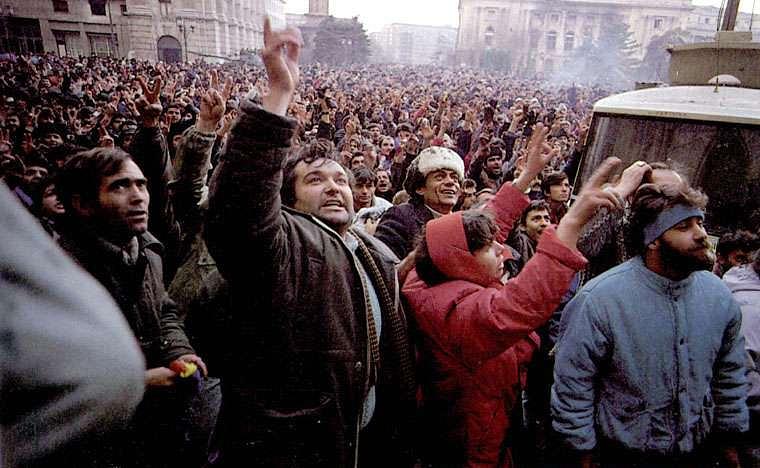Bloody repression, down-with-the-dictator slogans & unknown terrorists: How the Romanian Revolution unfolded 26 years ago

The Romanian revolution that led to the fall of communism erupted in Bucharest 26 year ago. The protests that had started in Timisoara, in western Romania, on December 15, reached the capital on December 21.
After a night of heavy shooting, Romania’s Communist dictator Nicolae Ceausescu and his wife Elena ran away. They were caught, briefly tried, and executed for crimes against their people on December 25, on Christmas day. Some 709 people died, and almost 2,200 were injured (1,855 of which shot) around December 22, 1989.
This year in October, prosecutors investigating the Revolution decided to close the case. They didn’t prosecute anyone arguing that some of the people responsible for some of the crimes at the Revolution have already been convicted in other cases.
Moreover, the Prosecutor’s Office within the High Court of Cassation and Justice said that many soldiers shot each other during the December 1989 events, due to “fatigue and stress.” People in military, civil or mixed groups easily opened fire towards buildings or vehicles that didn’t stop at control filters, according to the prosecutors.
The Romanian Revolution started in Timisoara on December 15. People took to the streets after the Government tried to evict the Reformed pastor Laszlo Tokes.
The authorities’ bloody repression didn’t put an end to the protests but ignited the events. Timisoara was declared a communism-free city on December 20.
One day later, Ceausescu, who had just returned from a visit to Iran, held a speech in Bucharest condemning the protests from Timisoara. People, however, didn’t cheer him as usually but started shouting slogans such as “Down with the dictator!", "Death to the murderer!" We are the people, down with the dictator!".
The same day, people organized a barricade in downtown Bucharest, but later that evening Ceausescu asked all military forces to mobilize and liquidate the protests. About 49 persons were killed that night, 500 were injured and over 1,000 were detained.
On December 22, the following day, tens of thousands of workers from the large industrial platforms located in the outskirts of Bucharest heard about the killings and headed towards the city center. The army’s efforts to block their access to the University Square proved useless. Soldiers gradually changed sides and allied with the protesters.
Later that day protesters tried to occupy the Central Committee building where Nicolae and Elena Ceausescu were hiding. They ran away with a helicopter.
However, on the evening on December 22, the apparent victory turned into chaos. Unknown people started shooting at public institutions, and they were called “terrorists”. The army was summoned to defend the revolution. People who had taken again to the streets were being shot at.
The street war with the “terrorists”, whose identity is still unknown, continued until December 25, when Nicolae and Elena Ceausescu, who had been betrayed by their own, were caught in Targoviste, briefly tried, and shot to death.
Ion Iliescu, a former leader of the Communist Party, who had been marginalized by Ceausescu because of his increasing influence, took a leading role in the Romanian Revolution. He formed and led the National Salvation Front (FSN), which governed Romania after Ceausescu’s fall. In May 1990, he became Romania’s first freely elected President.
Iliescu was prosecuted in October for the violent repression of the protests against his new regime, which took place in Bucharest in June 1990. According to the prosecutors, he and other high officials called the miners to Bucharest and instigated them to beat the protesters in Universitatii Square, who were unhappy with how the National Salvation Front had confiscated the Revolution in December 1989 by setting up what was in fact a continuation of the old regime.
However, despite the political controversies, the Romanian Revolution that started in Bucharest in December 1989, marked the end of an oppressive regime and opened the country towards the western countries. In the past 26 years, Romania has become a part of NATO and the European Union.
Case closed: Stress and fatigue are to blame for the 700 people dead in the Romanian Revolution
Video footage from the 1989 Romanian Revolution to be screened in downtown Bucharest
Romanian Revolution Institute: Over 1,100 people died in December 1989
Diana Mesesan, diana@romania-insider.com















